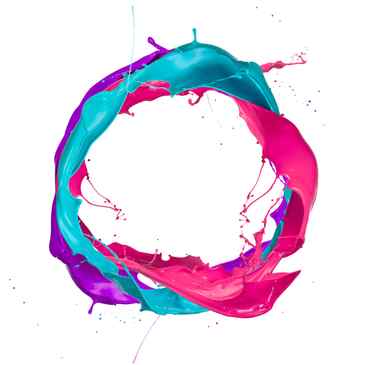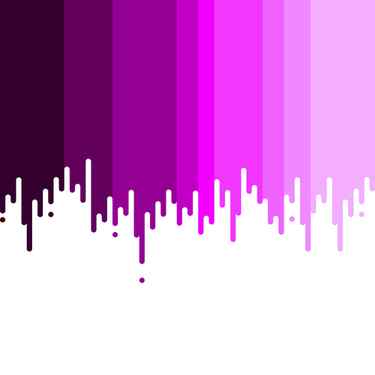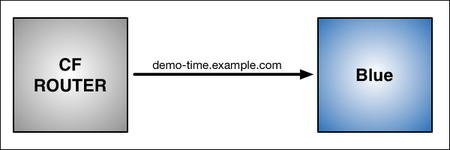Finding out what does and does not work well together is a little bit of foresight and a lot of practice.
What color does pink and blue make when mixed?
Pink and blue are two colors that are beloved worldwide.
Many people will happily declare them as their favorite colors if asked, and therefore they are commonly seen in many facets of art and design.
But what color does pink and blue make when mixed? That is the question we are here to answer in this guide.
Not only that, but we will also cover how to mix them, things you could use the resulting colors on and whether it’s even a good idea to begin with.
With that, let’s begin and see all of the possibilities that pink and blue can provide us!
How you can mix pink and blue?
First, we will tackle the question of how you can mix pink and blue. When it comes to this question, you can look at it in terms of design as well as how you can literally mix them.
We will cover both of these facets here and in subsequent steps of this guide in varying levels of detail. In color theory, blue is known as a cool color, so useful for things like water or ice.
With pink, it gets a little more complicated. It is generally perceived as a warm color due to its closer relationship to red.
That being said, certain shades can be considered cool colors. Regardless, pink and blue actually tend to go quite well with one another if the right shades are chosen.
Now you may be wondering what color you will get when you mix pink and blue. The answer to this question is that you will get a shade of purple.
The shade of purple you end up with will depend on certain factors, but you can bet that we will cover all of these factors as we move through the guide.
In terms of practicality, you can mix your shades of pink and blue together. This is usually done with paints, but pastels, crayons and other mediums can be used as well.
By combining the two, you end up with a whole new and unique color! We will also be telling you how to do that while having more control later on in the guide.
Now that we know a bit more on how you can mix pink and blue, let’s tackle the next point which concerns whether it’s even a good idea to begin with.
After that, we will then look at some uses for the colors and how you can create your own perfect combinations.
Are pink and blue a good combination to mix together?
The question we are examining in this point is whether it’s good to mix pink and blue. The answer to that can be a resounding yes in many circumstances!
To answer that question, you need to ask yourself a different one. That question is “Do I need purple for my picture?”
If that answer is yes, then you will find yourself answering yes to the first part as well. Pink and blue are not technically complementary colors, but they still go well together.
However, culturally speaking they are at odds with one another. Generally in most societies, pink is considered a girly color whereas blue is considered a boy’s color.
Why this is the case is anyone’s guess, and it doesn’t mean that boys can’t like pink or girls like blue. Regardless, it is the association that most people will give the colors to.
If buying presents for a baby boy, they will more likely than not be blue and vice versa. Despite this difference, they can still create pleasing results when used with each other.
Also, purple is generally considered a girl’s color as well. With pink and blue, you can create light or dark purples depending on what you’re trying to create.
Using purple with pink and blue can also create a soothing and pleasing set of colors. We will examine how you can work with the colors to achieve the results you want later on.
For now, we will move on to the next step and look at some of the results you can hope for when mixing pink and blue.
Color Theory: Pink and Blue

Before we can look at how these two shades blend together, we first have to see how they exist on their own.
We want to know the elements of these hues so that we can figure out why they react the way that they do. This is where color theory comes into play.
Primary vs. Secondary Colors
If you didn’t know already, blue is considered a primary color, and pink is a secondary one. But what’s the difference?
How do you know which is which?
At its core, primary colors are those that cannot be created by mixing other shades.
They exist in a pure form and cannot be reduced to any different colors. Think about it, how would you create blue? Secondary colors, on the other hand, are the opposite.
They are made by mixing two different shades, which means that you can always figure out what elements are inside. In the case of pink, it’s a mixture of red and white.
In turn, both of those colors are considered primary because they cannot be reduced any further.
Tertiary Colors
So what happens when you mix a primary and a secondary color together?
The result is called a tertiary color.
The name stems from the fact that we’re essentially mixing three different shades, rather than two. Even though pink and blue are the elements being blended, we have to remember that pink is a byproduct of two additional hues.
Usually, because of the abundance of color, those that are considered tertiary are much darker and deeper than primary or secondary shades.
Knowing this, we can already determine that our result of mixing blue and pink is going to be the same.
Warm vs. Cool Colors
The other difference between our two elements is that they sit on opposite sides of the color wheel. Warm shades are those that capture the feeling and intensity of warmth, such as fire and sunlight.
As such, orange, red and yellow is perfect examples. Since pink has red as a base, we can also consider it to be a warm shade as well.
Conversely, blue is categorized as a cool color. Think of ice, water, and cold feelings. Other examples of cool hues are green and purple.
When we see these shades, they are more calming, particularly when compared to the vibrancy of those on the other side of the spectrum.
What Color Do Pink and Blue Make?

Now that we know the basics of our two colors, what happens when we mix them? What tertiary shade is created when pink and blue are blended?
The simple answer to this question is purple. However, because of the nature of the color pink, it can vary based on that.
Purple is the secondary color itself, as it’s the byproduct of red and blue. However, because there is some white in there from the pink, we are going to get a variety of shades.
On the brighter end of the spectrum, we can see lavender and magenta.
On the darker side, the result could appear to be more plum or mauve. Because there are fundamentally three elements at play here (red, white, and blue), you can mix and match to create the right shade for your needs.
Adding some more red to your pink can give it a deeper, maroon-like finish.
Putting blue at the forefront will make it seem like a dark purple, which can add some richness and texture to your piece. We highly encourage you to play around with your hues so that you can get the best results.
Purple in Design

Once you’ve figured out the proper shade, how are you going to use it?
What kind of project are you working on? When thinking about how you can employ your shade of purple, here are some things to remember.
This shade can be utilized in a variety of ways, depending on how light or dark it is. Deep purple connotes things like royalty and class (think Crown Royal), while lighter shades can remind us of nature (lilacs and other flowers).
Purple can also straddle the line between warm and cool. Because it’s created with both shades, you can add more of one or the other to push it to one side. This makes purple a versatile and vibrant color that will add authenticity and style to your next project.





